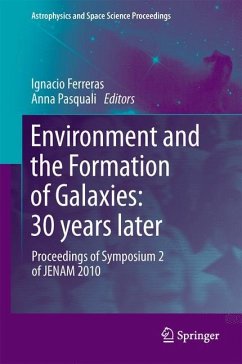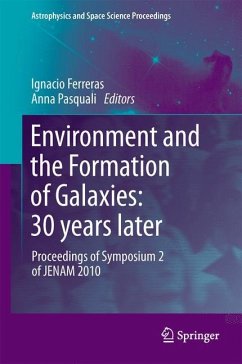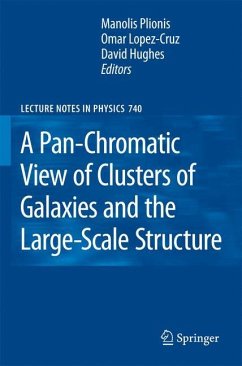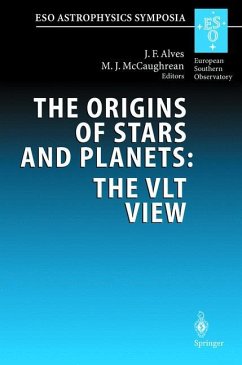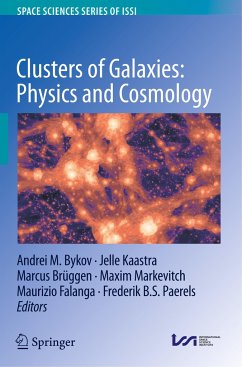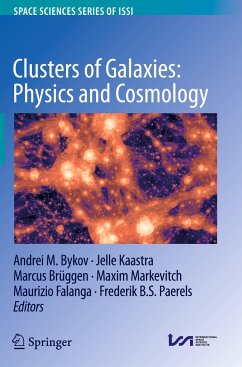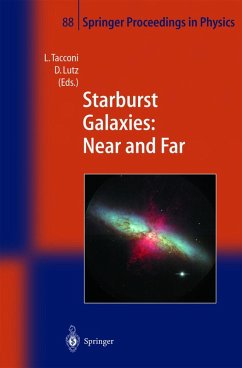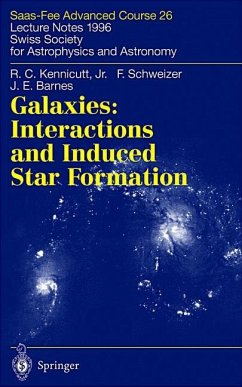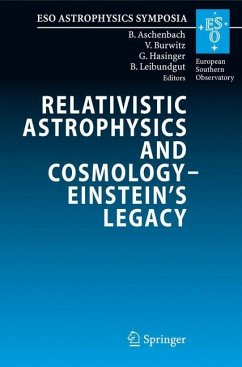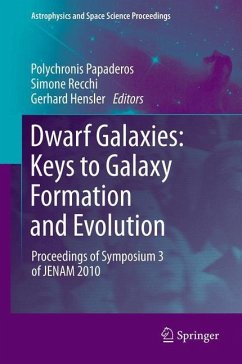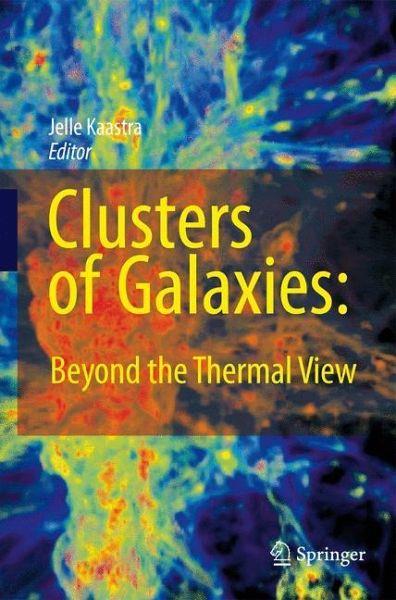
Clusters of Galaxies: Beyond the Thermal View
Versandkostenfrei!
Versandfertig in 1-2 Wochen
153,99 €
inkl. MwSt.

PAYBACK Punkte
77 °P sammeln!
This book presents a review on the physics of clusters of galaxies beyond the standard thermal view. The book first gives a general introduction to clusters of galaxies. It discusses the properties of the hot, virialised gas in these clusters. But the main focus is on what is beyond this thermal gas: the surrounding warm-hot intergalactic medium, non-thermal emission components and the chemical enrichment of the clusters and their environments. What is the evolution of the hot gas in clusters and the surrounding cosmic web? How does it reach equilibrium? What is the role of magnetic fields and shocks? Has the WHIM been detetected? Are there non-thermal components in clusters? How does the metallicity evolve? These questions and many others are addressed from three different points of view: observations, theory of the physical processes and numerical simulations.
The book is written as a tutorial review. It is meant as an introduction for professionals and students wishing to work in this field. This means that no attempt is made to give a complete overview of all the work that has been done in this field, but to focus upon what needs to be known to be able to work in this field, and to explain to the reader basic processes, techniques and observations that experts often assume to be common knowledge.
The book is written as a tutorial review. It is meant as an introduction for professionals and students wishing to work in this field. This means that no attempt is made to give a complete overview of all the work that has been done in this field, but to focus upon what needs to be known to be able to work in this field, and to explain to the reader basic processes, techniques and observations that experts often assume to be common knowledge.
The existence of soft excess emission originating from clusters of galaxies, de ned as em- sion detected below 1 keV in excess over the usual thermal emission from hot intracluster gas (hereafter the ICM) has been claimed since 1996. Soft excesses are particularly - portant to detect because they may (at least partly) be due to thermal emission from the Warm-Hot Intergalactic Medium, where as much as half of the baryons of the Universe could be. They are therefore of fundamental cosmological importance. Soft excess emission has been observed (and has also given rise to controversy) in a number of clusters, mainly raising the following questions: (1) Do clusters really show a soft excess? (2) If so, from what spatial region(s) of the cluster does the soft excess or- inate? (3) Is this excess emission thermal, originating from warm-hot intergalactic gas (at 6 temperatures of?10 K), or non-thermal, in which case several emission mechanisms have been proposed. Interestingly, some of the non-thermal mechanisms suggested to account for soft excess emission can also explain the hard X-ray emission detected in some clusters, for example by RXTE and BeppoSAX (also see Petrosian et al. 2008-Chap. 10, this issue; Rephaeli et al. 2008-Chap. 5, this issue).



